Nestled beneath the shadow of Tay Con Linh Mountain, Xa Phin Village offers travelers a rare glimpse into authentic Dao culture preserved amid breathtaking natural splendor. This highland hamlet in Ha Giang province stands as a living museum where moss-draped wooden houses perch on terraced hillsides and ancient tea trees whisper stories of generations past. Unlike the increasingly traveled spots on the Ha Giang Loop, Xa Phin remains refreshingly untouched, its rhythms still dictated by harvests and age-old traditions rather than tourism timetables. Join Phieu Travel as we journey into this highland sanctuary where time seems to stand still amid the mist-shrouded mountains of Vietnam’s far north.
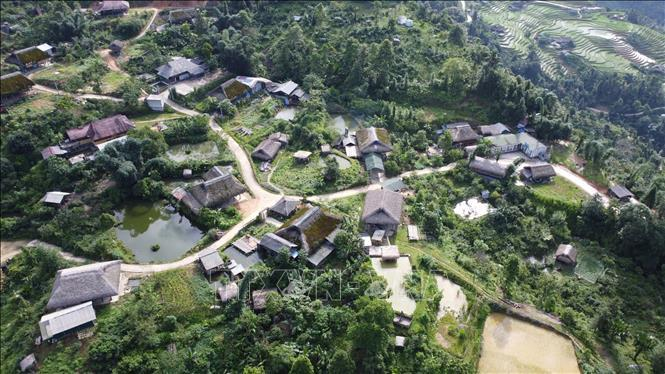
1. Overview: Location, History & Ethnic Identity
Xa Phin Village sits approximately 17 kilometers southwest of Ha Giang city, tucked away in the foothills of Tay Con Linh Mountain at an elevation of around 800-1,000 meters. This remote positioning has historically protected the village from outside influences, allowing its cultural identity to remain remarkably intact. The village belongs to Vi Xuyen district, a region known for its rugged terrain and diverse ethnic communities.
Historically, Xa Phin was established over 300 years ago by Dao ethnic minorities seeking fertile mountain slopes for agriculture. The name “Xa Phin” in the Dao language roughly translates to “flat land among mountains,” aptly describing its geographical setting. These settlers brought with them sophisticated knowledge of herbal medicine, embroidery techniques, and sustainable mountain farming practices that continue to define village life today.
The Dao people of Xa Phin belong primarily to the Red Dao subgroup, recognizable by their distinctive red headdresses and elaborately embroidered clothing. Their cultural identity remains deeply rooted in animistic beliefs, with spiritual practices centering around ancestor worship and forest deities. Despite increasing exposure to modern influences, the community maintains traditional ceremonies marking important life events and agricultural cycles, preserving a cultural continuity increasingly rare in Vietnam’s developing highlands.
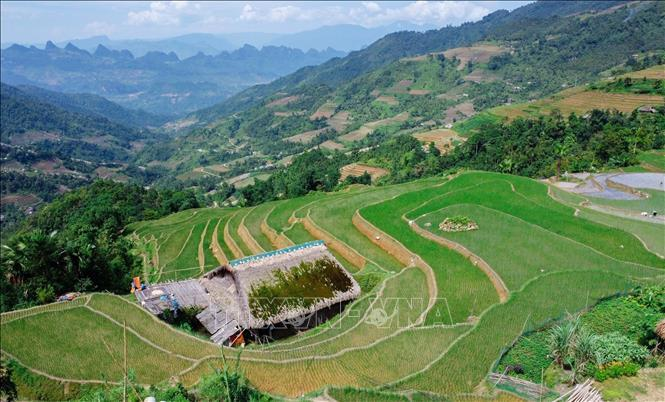
While Ha Giang province hosts numerous ethnic villages, Xa Phin distinguishes itself through several unique characteristics. Unlike the more tourism-oriented villages along the main Ha Giang Loop, Xa Phin remains primarily focused on traditional livelihoods rather than visitor services. This authenticity creates a markedly different atmosphere from places like Lung Cam or Pho Cao, where tourism infrastructure has significantly altered daily rhythms.
Architecturally, Xa Phin’s moss-covered wooden houses represent a distinct style even among Dao communities. The village’s homes feature thick wooden walls and characteristic moss growth encouraged by the cool, misty microclimate beneath Tay Con Linh. This stands in contrast to the earthen walls common in H’mong villages or the elevated stilt houses of the Tay communities elsewhere in the province.
Perhaps most significantly, Xa Phin’s ancient Shan Tuyet tea gardens set it apart from neighboring communities. While many Ha Giang villages practice rice cultivation on terraced fields, Xa Phin combines this with centuries-old tea cultivation, creating a unique agricultural landscape and cultural heritage. The village’s position in a transitional ecological zone between lower valleys and higher peaks also supports greater biodiversity than many similar settlements in the region.
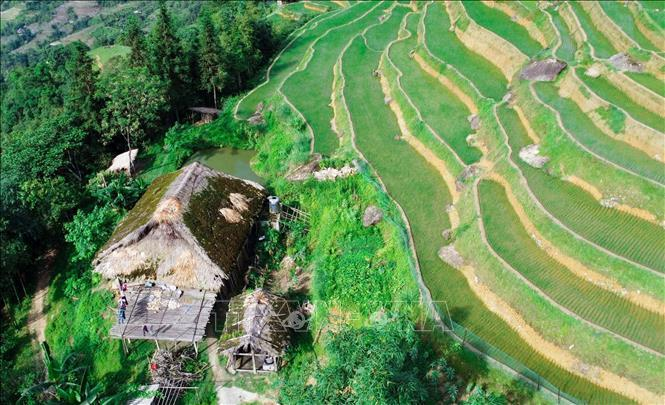
2. Scenic Highlights: Terraced Fields & Moss-Covered Dao Houses
Xa Phin Village presents a visual tapestry that changes dramatically with the seasons. The village’s terraced rice fields cascade down mountain slopes in elegant curves that follow the natural contours of the land. During late spring planting season, these terraces transform into mirrored pools reflecting the sky. By September and October, they turn golden with ripening rice, creating a warm contrast against the surrounding green mountains and blue skies.
The village’s iconic moss-covered wooden houses stand as perhaps the most distinctive architectural feature in Xa Phin. Unlike modern construction, these centuries-old dwellings are built entirely of hand-hewn timber, with thick wooden walls and roof beams that have developed a verdant carpet of moss over decades. This living blanket of green serves both aesthetic and practical purposes – providing natural insulation against mountain cold while creating the dreamlike quality that has enchanted visitors and photographers.
Walking through the village reveals intimate scenes of daily life unfolding against this picturesque backdrop. Smoke rises from stone hearths as women in vibrant traditional dress tend to household tasks. Children play in narrow pathways between homes, while elders sit in doorways, hands busy with embroidery or bamboo weaving. The overall effect is one of stepping into a living postcard, where each angle presents a new composition of architectural harmony with nature.
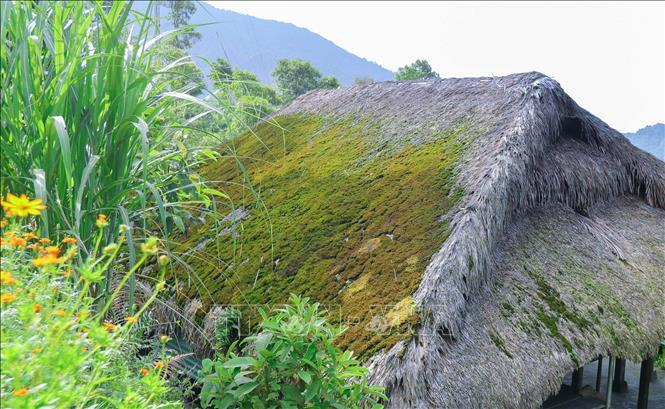
Xa Phin’s visual character transforms dramatically throughout the year, with each season offering distinct photographic opportunities and cultural experiences. Spring brings vibrant blooms to fruit trees and wild flowers scattered among the village paths. This coincides with important planting rituals when villagers perform ceremonies seeking blessings for the agricultural year ahead.
Summer transforms the landscape with lush greenery, as young rice plants create a brilliant emerald mosaic across the terraced hillsides. This season often features the “Going to the Forest” festival, when Dao people gather medicinal herbs and perform thanksgiving rituals. The increased humidity during these months enhances the moss growth on village houses, making summer one of the most visually distinctive periods to visit.
Autumn heralds the most celebrated time in Xa Phin’s calendar, when golden rice fields signal harvest season. The village becomes a hive of activity as families work together to gather crops before winter. This period typically features the most important community celebrations, including harvest festivals with traditional music, dance performances, and communal feasts. Photographers particularly prize this season for the warm golden light that bathes the village in late afternoon, creating stunning contrasts with the moss-covered architecture.
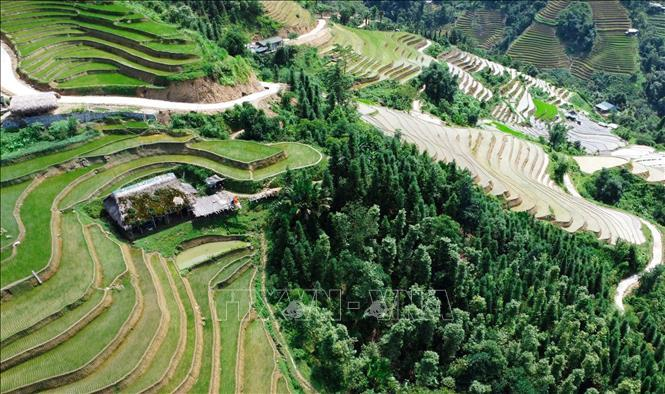
Ha Giang Loop vs Sapa? The Ultimate Guide for Solo Adventurers in Northern Vietnam
3. Unique Flora: Ancient Shan Tuyet Tea Trees of Xa Phin
The ancient Shan Tuyet tea trees of Xa Phin represent one of northern Vietnam’s most precious living botanical treasures. These centuries-old trees grow semi-wild on the foggy slopes surrounding the village, some reaching heights of 5-6 meters with trunks measuring over a meter in circumference. Unlike commercial tea plantations with neatly trimmed bushes, these venerable trees maintain their natural form, growing amid native forest vegetation in a symbiotic relationship with the mountain ecosystem.
Local tea cultivation traditions date back approximately 300 years, when Dao settlers recognized the ideal conditions created by Tay Con Linh’s unique microclimate. The combination of high altitude, persistent mountain mist, and mineral-rich soil produces tea leaves with exceptional flavor characteristics. Shan Tuyet (meaning “Snow Mountain”) tea derives its name from the silvery-white downy appearance of young leaves, particularly visible in early morning mist.
The tea harvested from these ancient trees differs significantly from commercial varieties. Xa Phin’s Shan Tuyet produces a distinctively sweet aftertaste with notes of wild honey and forest herbs that tea connoisseurs highly prize. Village families harvest leaves using traditional methods, carefully selecting only the youngest shoots during specific seasonal windows. This sustainable approach ensures the trees’ continued health and productivity, with some specimens reportedly yielding quality leaves for over 300 years.
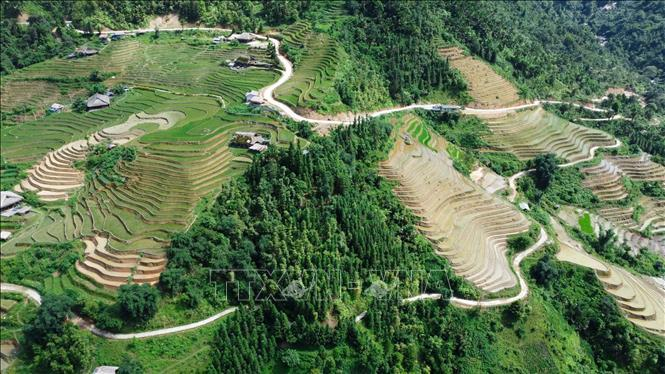
Visitors to Xa Phin can participate in authentic tea experiences that go far beyond typical tourist offerings. Several families in the village welcome guests to join traditional tea processing demonstrations, where freshly picked leaves undergo hand-rolling, oxidation, and wood-fire drying according to techniques passed through generations. The intimate setting allows visitors to ask questions and observe subtle details often missed in larger commercial tours.
The proper tasting of Xa Phin’s Shan Tuyet tea follows Dao customs that enhance appreciation of its complex flavor profile. Traditional clay pots or porcelain gaiwans are used for brewing, with multiple infusions revealing how the tea’s character evolves. Local guides through Phieu Travel can arrange sessions with respected village tea masters who explain the cultural significance of different brewing methods and serving rituals associated with various social occasions.
For enthusiasts seeking deeper knowledge, specialized tea tours include visits to the ancient trees themselves. These excursions typically involve moderate hiking through forest paths to reach the oldest specimens, some estimated to be 300-500 years old. The journey provides context for understanding how the mountain environment influences tea quality and offers opportunities to learn about other medicinal plants the Dao people harvest from the same ecosystem.
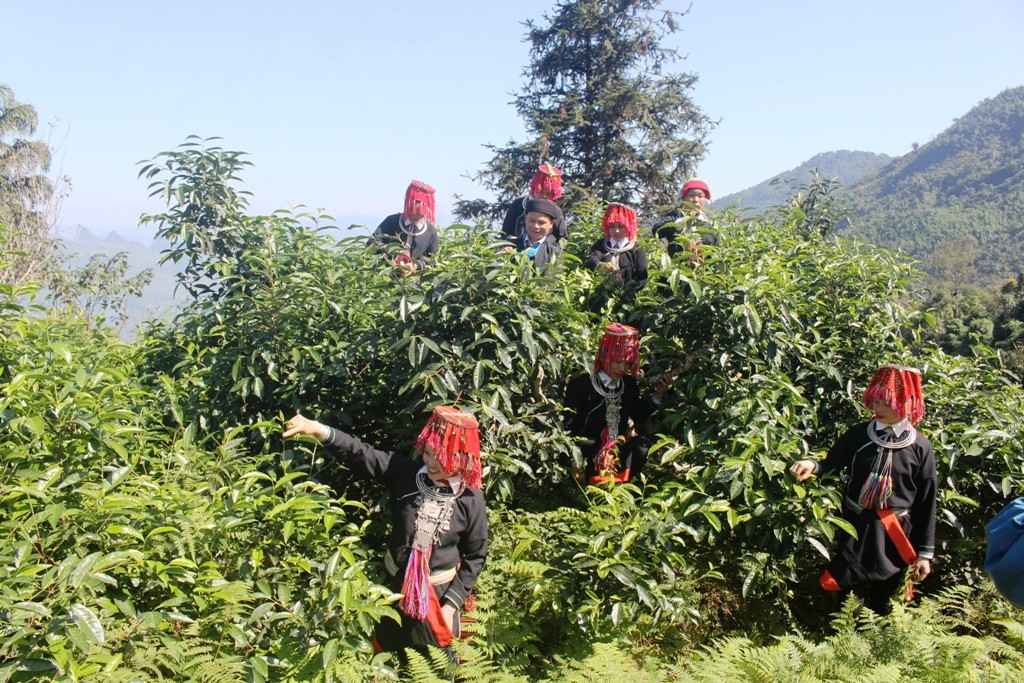
4. Visitor Guide: Transport, Best Time, What To Do
Reaching Xa Phin Village requires some planning, as public transportation options are limited. From Ha Giang city, the most straightforward approach is hiring a motorbike (approximately 150,000-200,000 VND daily) and following Provincial Road 178 southwest for about 17 kilometers. The route features several steep sections and hairpin turns, making it suitable for those comfortable with mountain driving. Alternatively, Phieu Travel can arrange private car transfers with experienced local drivers familiar with the challenging road conditions.
The best time to visit depends largely on your interests and preferred scenery. September through October offers golden rice terraces during harvest season, while April to May showcases the vivid green of newly planted fields. Tea enthusiasts should consider March to April, when the first spring tea flush produces the most prized leaves. Winter months (December-February) bring challenges with occasional fog and colder temperatures but reward visitors with misty mountain vistas and fewer travelers.
Activities in Xa Phin center around immersive cultural experiences and nature exploration. Guided village walks introduce visitors to traditional Dao architecture and daily life practices. Several families offer embroidery workshops where you can learn basic stitching techniques used in ceremonial clothing. Tea harvesting and processing demonstrations provide hands-on experience with this ancient craft. For the adventurous, hiking trails lead from the village to panoramic viewpoints on surrounding ridges, with routes varying from easy 2-hour walks to challenging full-day treks.
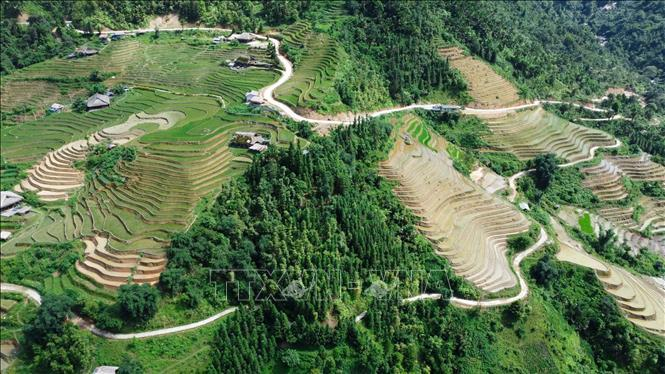
4.1 Suggested Itinerary: Day Trips & Overnight Options
A well-planned day trip from Ha Giang city allows visitors to experience Xa Phin’s highlights while returning to urban accommodations by evening. Departing Ha Giang by 8:00 AM, travelers reach the village by mid-morning, leaving ample time for a guided village tour and tea experience. Lunch with a local family introduces traditional Dao cuisine featuring mountain herbs and forest ingredients. Afternoon activities might include visiting the ancient tea trees or exploring nearby terraced fields before returning to Ha Giang by sunset.
For a more immersive experience, Phieu Travel recommends overnight stays in one of the village’s limited homestay options. A typical two-day itinerary begins with morning arrival and orientation with your host family. After lunch, visitors join afternoon activities like herbal walks or embroidery demonstrations. Evening brings traditional Dao meals around the hearth fire, often accompanied by rice wine and storytelling. The second day allows for deeper exploration of surrounding natural attractions and participation in seasonal agricultural activities before departure.
Ambitious travelers might consider incorporating Xa Phin into a broader Ha Giang circuit. A three-day itinerary could combine Xa Phin with nearby attractions like Thon Tha village (known for paper making) and Lung Tam (famous for linen weaving). This approach offers comparative insights into different ethnic traditions within a relatively compact geographical area. Phieu Travel can customize such multi-village experiences with appropriate transportation arrangements and cultural interpretation to maximize authenticity and educational value.
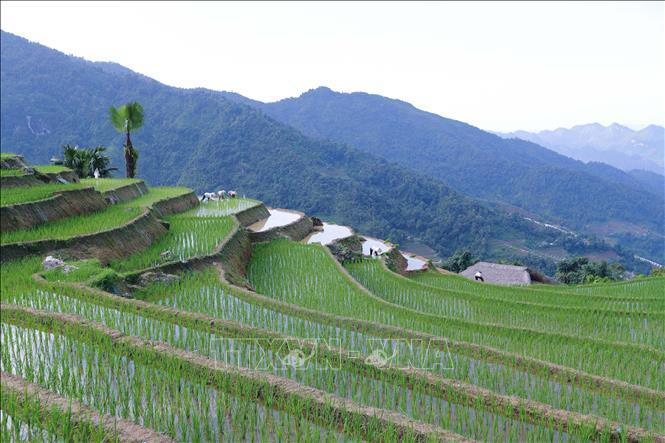
4.2 How to book a Dao homestay
Homestay accommodations in Xa Phin remain limited and basic, reflecting the village’s early stage in community-based tourism development. Currently, about five families offer guest lodging in traditional wooden houses, providing simple sleeping arrangements on floor mattresses with mosquito nets. Bathroom facilities typically include outdoor washrooms with bucket showers, though some homes have added basic western-style facilities for visitors.
The most reliable booking method is through specialized tour operators like Phieu Travel, who maintain direct relationships with host families and can confirm availability. Advance reservation is essential, particularly during harvest season (September-October) when limited spaces fill quickly. Independent travelers attempting direct bookings will face language barriers, as most families speak minimal English and limited Vietnamese, communicating primarily in Dao language.
Expectations should align with the authentic nature of these accommodations. Electricity may be intermittent, and internet connectivity is generally unavailable. Meals feature home-grown ingredients prepared on traditional wood-fired hearths, with limited accommodation for specific dietary requirements. What these homestays lack in modern conveniences, they compensate for with genuine cultural immersion – the opportunity to experience daily life alongside families who have maintained their traditions for generations in this remote mountain setting.
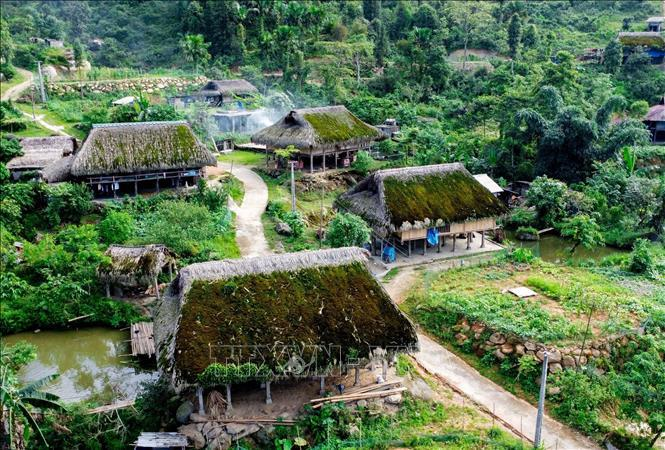
5. Community & Conservation: Local Life Amid Modern Change
The Dao community of Xa Phin faces the universal challenge of balancing tradition with development. Village life continues to revolve around agricultural cycles, with families rising before dawn to tend fields and tea gardens before temperatures rise. Women gather in communal spaces to work on intricate embroidery while exchanging news and sharing childcare responsibilities. Elders play crucial roles as knowledge keepers, instructing younger generations in medicinal plant identification, ritual practices, and oral histories that constitute their cultural heritage.
Despite this continuity, subtle modernization appears throughout village life. Solar panels now supplement or replace kerosene lamps in many homes. Motorbikes have largely supplanted horse transport for journeys to market towns. Mobile phones connect younger villagers to broader Vietnamese society, introducing new influences and aspirations. This technological integration creates a community in transition, where traditional knowledge coexists with contemporary adaptations.
Conservation efforts increasingly focus on Xa Phin’s unique cultural and natural assets. The ancient tea trees represent both ecological and cultural heritage, with recent initiatives documenting their genetic diversity and traditional management practices. Local NGOs have worked with village elders to record medicinal plant knowledge before it diminishes with passing generations. Community-based tourism models aim to generate sustainable income while incentivizing preservation of traditional architecture and practices that might otherwise disappear amid economic pressures.
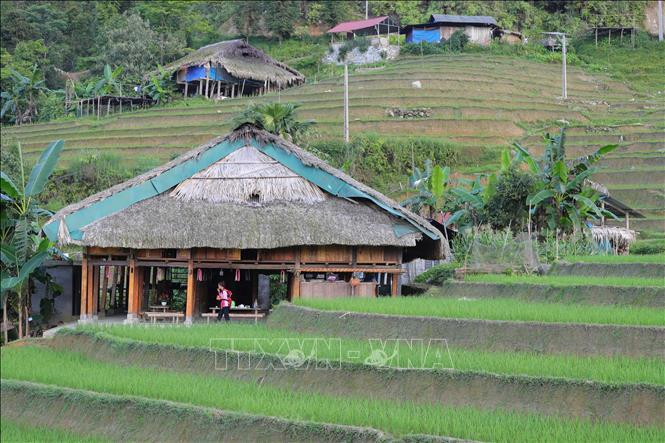
6. Travel Tips & Frequently Asked Questions
Before visiting Xa Phin Village, travelers should prepare appropriately for a remote mountain destination. Pack layered clothing suitable for variable temperatures, as mornings and evenings can be surprisingly cool even in summer months. Sturdy walking shoes are essential for navigating steep village paths that become slippery after rain. Bring cash in small denominations, as no banking facilities exist in the village, and most transactions involve direct payment to families providing services or selling handicrafts.
Responsible photography practices help maintain positive relationships with the community. Always ask permission before photographing individuals, particularly during ceremonial activities or inside homes. Some Dao spiritual practices have prohibitions against photography, so follow your guide’s advice about appropriate moments. Consider printing and returning photos on subsequent visits, as this gesture is greatly appreciated by families who may have few images of themselves.
Cultural sensitivity extends to behavioral expectations. Remove shoes when entering homes, accept tea when offered (a standard welcome gesture), and greet elders first when meeting a family group. If invited to a meal, try at least small portions of all dishes presented, as this shows respect for your hosts. Small gifts like tea, fruit, or school supplies for children are appropriate tokens of appreciation but avoid giving candy or creating expectations of material gifts.
6.1 What makes Xa Phin Village unique among Ha Giang destinations?
Xa Phin Village distinguishes itself through three exceptional features rarely found in combination elsewhere in Ha Giang. First, its ancient Shan Tuyet tea trees represent a living cultural heritage dating back centuries, with some specimens estimated at 300-500 years old. Second, the distinctive moss-covered wooden architecture creates a fairytale-like atmosphere unique even among Dao communities. Finally, Xa Phin maintains a higher degree of cultural authenticity than more frequented villages on standard tourist routes, with daily life still primarily oriented around traditional practices rather than visitor services.
6.2 How do I reach Xa Phin Village from Ha Giang city?
The most direct route covers approximately 17 kilometers southwest from Ha Giang city via Provincial Road 178. Independent travelers typically rent motorbikes from Ha Giang (150,000-200,000 VND daily) and self-drive, allowing flexibility to stop at viewpoints along the way. The journey takes 40-60 minutes depending on road conditions and comfort with mountain driving. Those preferring four-wheel transport can hire private cars with drivers through hotels or tour operators in Ha Giang city, costing 500,000-700,000 VND for a round-trip. No regular public transportation serves the village directly, though occasional local trucks may offer informal rides to within walking distance.
6.3 When is the best time to visit Xa Phin Village for rice terraces and tea blooms?
For optimal rice terrace views, visit during either planting season (April-May) when terraces become mirrored pools reflecting the sky, or harvest season (September-October) when fields turn golden. The tea experience peaks in early spring (March-April) when trees produce their first and most prized flush, with delicate flavor profiles. This period often coincides with flowering tea trees, adding white blossoms to the landscape. Photographers particularly value October for its combination of golden light, clear skies, and colorful harvest activities. Winter months offer atmospheric misty landscapes but can bring challenging weather and reduced agricultural activity.
6.4 Can I stay overnight or visit locals in Xa Phin Village?
Limited homestay accommodations exist within traditional Dao houses, providing authentic cultural immersion. Several families host visitors in their wooden homes, offering simple sleeping arrangements on floor mattresses with mosquito nets. Evening meals are prepared on wood fires using local ingredients, often accompanied by rice wine and conversation through interpreters. Advanced booking through operators like Phieu Travel is essential, as accommodations are limited and communication barriers exist. Day visits are always welcome, with local guides available to facilitate interactions with villagers, demonstrations of traditional crafts, and participation in seasonal activities according to community protocols.
6.5 What experiences can tourists expect in Xa Phin?
Visitors to Xa Phin can engage in a range of immersive cultural activities depending on timing and arrangements. Tea experiences form a cornerstone, including harvesting demonstrations, processing workshops, and tastings guided by village experts. Embroidery sessions with Dao women showcase intricate traditional patterns and techniques. Guided herb walks introduce the medicinal plants central to Dao healing traditions. Seasonal agricultural activities welcome participant observation, from rice planting to harvest. Cooking demonstrations feature distinctive Dao cuisine utilizing foraged ingredients and traditional preservation methods. Throughout these experiences, cultural interpretation from knowledgeable guides ensures deeper understanding of the practices’ significance within Dao cosmology and daily life.
6.6 Is Xa Phin Village suitable for trekking or family trips?
Xa Phin offers excellent trekking opportunities for various fitness levels, with trails radiating from the village into surrounding forests and mountains. Shorter walks (2-3 hours) lead to panoramic viewpoints and ancient tea groves, while ambitious hikers can undertake full-day routes toward Tay Con Linh’s higher slopes. Family appropriateness depends on children’s ages and adaptability. The village welcomes families, with local children often eagerly interacting with young visitors. However, basic facilities, steep pathways, and limited medical services make it best suited for families with children over age six who can manage uneven terrain. Phieu Travel can arrange modified itineraries with shorter activities and appropriate safety considerations for family groups.
Xa Phin Village offers a rare window into Dao cultural heritage preserved amid the breathtaking landscapes of Ha Giang province. The harmonious blend of ancient tea cultivation, traditional architecture, and living cultural practices creates an experience that transcends typical tourism. Unlike more developed destinations on standard northern Vietnam itineraries, Xa Phin remains authentically engaged with traditions that have sustained its community for centuries.
As travelers increasingly seek meaningful cultural encounters beyond tourist centers, villages like Xa Phin represent a model for sustainable, community-centered tourism. The preservation of ancient tea trees, traditional handicrafts, and architectural heritage provides economic incentives for maintaining cultural practices that might otherwise fade under modernization pressures. Visitors who approach with respect and genuine curiosity contribute to this conservation while gaining insights impossible to acquire through more superficial experiences.
Phieu Travel specializes in facilitating these meaningful connections between travelers and remote communities like Xa Phin Village, Ha Giang. Our local guides provide cultural context and language interpretation that transform a simple visit into a profound learning experience. Whether you’re seeking photography opportunities among moss-covered houses, hoping to taste authentic mountain tea at its source, or wanting to understand traditional Dao lifeways, our customized itineraries open doors to experiences that respect both visitor interests and community values. Discover the hidden treasures of northern Vietnam’s cultural landscape with us at phieutravel.com, where authentic experiences and responsible tourism come together.
Read more:
- The Ultimate Guide to Khau Vai Love Market in Ha Giang
- Ha Giang Loop Safety Tips: How to Ride Securely in Vietnam’s Northern Mountains
- The Ultimate Guide to the M-Shaped Curve on Ha Giang Loop

You Might Also Like
Ha Giang Weather in September: Complete Guide for Travelers
Exploring the magnificent Ha Giang Loop in September offers travelers a perfect balance of favorable[...]
Quan Ba Twin Mountains: Ha Giang’s Iconic Fairy Hills and Complete Travel Guide
The mystical Quan Ba Twin Mountains rise from the emerald valleys of Ha Giang like[...]
Vuong family mansion: the architectural marvel and cultural legacy of Ha Giang
Deep in Vietnam’s northern highlands, where mist-shrouded mountains meet terraced rice fields, stands a testament[...]
Ha Giang Loop Safety Tips: How to Ride Securely in Vietnam’s Northern Mountains
The Ha Giang Loop, with its winding mountain roads and breathtaking landscapes, offers one of[...]
The Ultimate Guide to the M-Shaped Curve on Ha Giang Loop
Vietnam’s remote northern province of Ha Giang hides a natural wonder that has captivated adventurous[...]
Most Beautiful Places to Visit in Vietnam: Essential Destinations and Insider Tips
Vietnam captivates travelers with its stunning landscapes, rich cultural heritage, and warm hospitality. From mist-shrouded[...]
Beyond the Beaten Path: Discovering Ha Giang Province in Northeast Vietnam
Ha Giang Province in Northeast Vietnam stands as one of the country’s last frontiers for[...]
Rainy season in Ha Giang: what to expect, when to go, and travel tips
Vietnam’s northern frontier reveals a different face during the rainy season, transforming Ha Giang’s limestone[...]